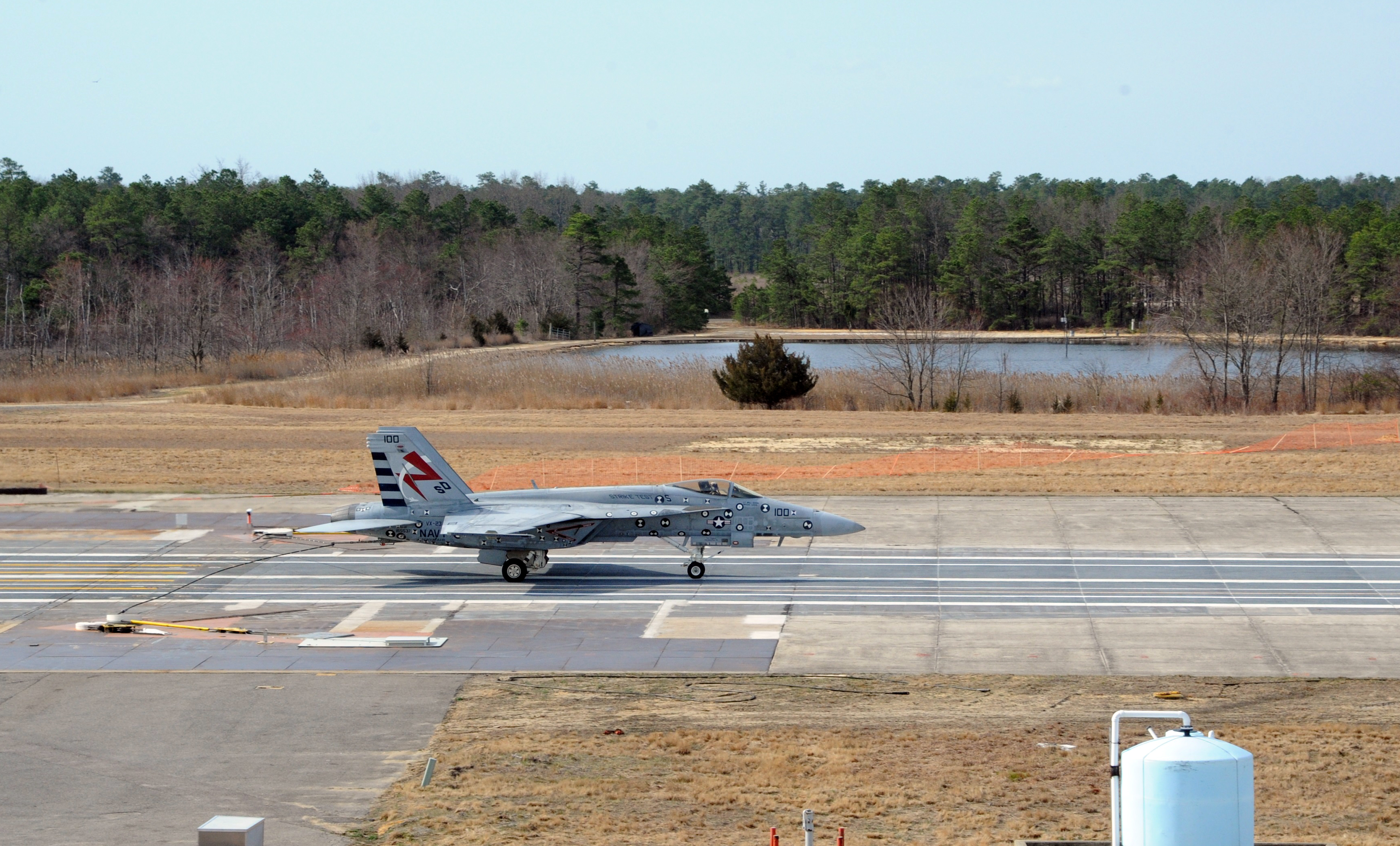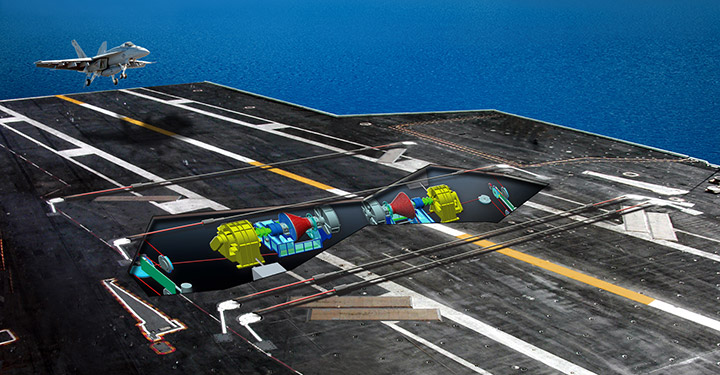
The Navy’s next generation of landing system for its Gerald Ford-class aircraft carrier successfully trapped its first aircraft last week.
A Boeing F/A-18E was arrested by a test General Atomics Advanced Arresting Gear (AAG) installed at a test facility at Joint Base McGuire-Dix-Lakehurst, in Lakehurst, N.J.
The landing of the Super Hornet marks the start of manned aircraft tests for the system that was also installed in parallel on Gerald R. Ford (CVN-78) — currently finishing construction.
The facility in New Jersey had arrested simulated dead loads and jet cars ahead of the first manned arrested landing with the Super Hornet from Naval Strike Aircraft Test Squadron 23 (VX-23) on March 31, according to a General Atomics statement.
“More than 1,200 successful dead load arrestments have been completed at the Jet Car Test Site in Lakehurst, New Jersey,” stated Dean Key with General Atomics said in the statement.
“Now, with the arrestment of aircraft, we take an important step in verifying the dynamic controls and system performance as a whole.”
The AAG underwent an extensive redesign in 2013 that delayed the testing schedule by two years, Navy officials disclosed in 2015.

“We are about two years behind where we should be up at Lakehurst in terms of having the systems installed and testing it with real aircraft,” Rear Adm Tom Moore said last year.
“I have to get equipment installed… and concurrently with that I have to get Lakehurst to start testing the upgraded system.”
In October, the Naval Air Systems Command said that after the redesign of the AAG, the service said it will only have to deal with software fixes on the Ford and no major other hardware improvements.
“We feel confident we can deliver hardware to the ship without having to go back and redesign or remove and replace anything we’ve delivered to the ship,” Rear Adm. Donald Gaddis, Program Executive Officer for Tactical Aircraft said in an October hearing.
The tests will inform a series of recovery bulletins for the aircraft that will operate on the Ford-class.
“The plan right now is to do these recovery bulletins in incremental steps,” he said.
“We’ll start with the Super Hornet E/F, then we’ll go to the F-18C and then we’ll go to the E2 [Hawkeye] and C-2 [Greyhound]. And our plan is to do all those type/model/series and get all those recovery bulletins done before we hand it over to [the director of operational test and evaluation.”
The following is the complete April 1, 2016 release from General Atomics.
AAG Program Successfully Completes First Aircraft Arrestment
SAN DIEGO, April 1, 2016 – General Atomics Electromagnetic Systems (GA-EMS) announced today the first successful completion of an aircraft arrestment made with the Advanced ArrestingGear (AAG) March 31. GA-EMS, in collaboration with the U.S. Navy, conducted the arrestment of an F/A-18E Super Hornet at the Runway Arrested Landing Site (RALS) located at Joint Base McGuire-Dix-Lakehurst, in Lakehurst, New Jersey. AAG is a state-of-the-art turbo-electric system designed for controlled and reliable deceleration during aircraft recovery operations on carriers.
“The first aircraft arrestment marks a major milestone in demonstrating AAG performance and capability,” stated Scott Forney, President of GA-EMS. “This also represents the culmination of many man-hours of design and development efforts, and a definitive step toward bringing this transformational technology into the next phase of testing and optimization.”
“More than 1,200 successful dead load arrestments have been completed at the Jet Car Test Site in Lakehurst, New Jersey,” stated Dean Key, Director, Launch and Recovery Production Programs and AAG Design and Development. “Now, with the arrestment of aircraft, we take an important step in verifying the dynamic controls and system performance as a whole. We’re extremely proud of this accomplishment, and are excited to continue down this path of success as the AAG system undergoes additional aircraft arrestment testing and demonstration activity.”
AAG is installed aboard Pre-Commissioning Unit Gerald R. Ford (CVN 78), and is scheduled for installation on the future John F. Kennedy (CVN 79), which is currently under construction. The company’s Electromagnetic Aircraft Launch System (EMALS), which uses electromagnetic technology to launch aircraft from the deck of naval aircraft carriers, is also installed and undergoing dead load testing on CVN 78. In addition to AAG, EMALS is scheduled for installation on CVN 79.





